-
 Bitcoin
Bitcoin $107,602.2304
-0.02% -
 Ethereum
Ethereum $2,447.3964
1.65% -
 Tether USDt
Tether USDt $1.0002
-0.01% -
 XRP
XRP $2.1366
-2.92% -
 BNB
BNB $644.0774
-0.17% -
 Solana
Solana $142.8336
-1.81% -
 USDC
USDC $0.9998
-0.01% -
 TRON
TRON $0.2717
-0.01% -
 Dogecoin
Dogecoin $0.1599
-2.69% -
 Cardano
Cardano $0.5558
-3.30% -
 Hyperliquid
Hyperliquid $37.7611
-0.60% -
 Bitcoin Cash
Bitcoin Cash $492.4270
2.94% -
 Sui
Sui $2.6401
-5.08% -
 Chainlink
Chainlink $13.0708
-0.39% -
 UNUS SED LEO
UNUS SED LEO $8.9954
-0.11% -
 Stellar
Stellar $0.2360
-2.86% -
 Avalanche
Avalanche $17.2948
-2.57% -
 Toncoin
Toncoin $2.8116
-2.05% -
 Shiba Inu
Shiba Inu $0.0...01127
-2.82% -
 Litecoin
Litecoin $84.4846
-0.15% -
 Hedera
Hedera $0.1450
-4.73% -
 Monero
Monero $313.5195
-1.68% -
 Dai
Dai $0.9998
0.00% -
 Ethena USDe
Ethena USDe $1.0000
-0.03% -
 Polkadot
Polkadot $3.3074
-2.73% -
 Bitget Token
Bitget Token $4.4402
1.32% -
 Uniswap
Uniswap $6.8127
-2.37% -
 Pi
Pi $0.5561
-13.81% -
 Pepe
Pepe $0.0...09262
-5.93% -
 Aave
Aave $253.3029
-1.99%
Should I stop loss if the gap is not filled for three days?
In crypto trading, unfilled gaps often signal strong trends, especially when driven by fundamentals or sentiment, and should be carefully analyzed before adjusting stop losses.
Jun 26, 2025 at 06:35 pm
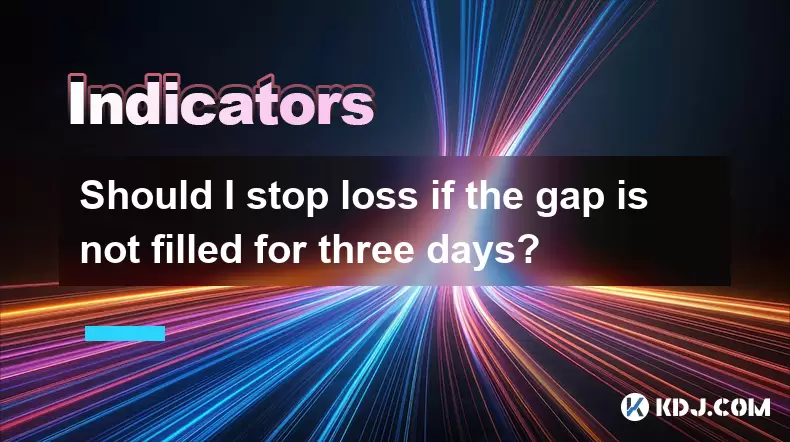
Understanding Gaps in Cryptocurrency Trading
In cryptocurrency trading, gaps refer to areas on a price chart where the asset's price jumps from one level to another without any trading occurring at the intermediate levels. These gaps can appear due to sudden market movements, often influenced by news events, macroeconomic data releases, or shifts in investor sentiment. Unlike traditional markets that operate within fixed hours, crypto markets trade 24/7, but gaps still occur, particularly during exchange downtimes or abrupt volatility.
The presence of a gap doesn't inherently indicate whether it will be filled or not. Traders often monitor how quickly a gap is closed—within minutes, hours, or days—to determine its significance. In volatile assets like cryptocurrencies, gap behavior can differ significantly from traditional equities, making it essential to analyze them with caution.
Why Do Some Gaps Remain Unfilled?
Not all gaps are destined to be filled immediately—or ever. There are several reasons why a gap might remain unfilled for an extended period:
- Strong Fundamental Shifts: If a gap results from a major event such as regulatory changes or project updates, the new price level may become a new baseline.
- Market Sentiment Changes: Sudden shifts in trader psychology can cause prices to move away from previous levels permanently.
- Low Liquidity Zones: Some gaps occur in regions with minimal trading volume, and if no significant buying or selling pressure returns to that zone, the gap remains open.
When a gap stays unfilled for three days, traders must assess whether it’s a common gap, breakaway gap, or exhaustion gap to make informed decisions about setting stop losses.
Stop Loss Considerations Around Unfilled Gaps
Setting a stop loss near or around an unfilled gap is a strategic decision based on technical analysis and risk tolerance. Here’s what you should consider:
- Position Relative to the Gap: If your entry point is close to the gap and the price hasn’t revisited it in three days, it may indicate strength in the current trend.
- Trend Continuation Signals: Look for supporting indicators like moving averages, RSI, or MACD to confirm whether the trend is likely to continue.
- Volatility Levels: High volatility could mean the price may return to fill the gap, but it might also suggest continued movement in the current direction.
Some traders use unfilled gaps as potential support or resistance zones, while others ignore them if they’re not part of a broader technical pattern. The key lies in aligning your stop loss strategy with your overall trading plan.
How to Analyze a Gap That Remains Open for Three Days
If you're facing a situation where a gap has remained unfilled for three days, here’s a detailed approach to analyze it effectively:
- Review the Chart Timeframe: Examine both higher timeframes (like daily or weekly charts) and lower ones (hourly or 15-minute) to understand the context of the gap.
- Check Volume at the Gap Area: A high-volume gap suggests stronger conviction among traders, increasing the likelihood that the price won’t return soon.
- Evaluate Recent News or Events: Determine whether the gap was caused by a fundamental catalyst. If so, it may not be filled unless there’s a reversal in that narrative.
- Use Fibonacci Retracements: See if the gap aligns with key retracement levels. This can help assess whether it’s a critical psychological level.
- Monitor Price Behavior Near the Gap: Watch for rejection candles or consolidation patterns near the gap area. These can signal whether the market respects the level.
By combining these tools and observations, you can better judge whether to keep your stop loss near the gap or adjust it elsewhere.
Practical Steps to Adjust Your Stop Loss Based on Gap Analysis
Here’s a practical guide to adjusting your stop loss when dealing with a gap that hasn’t been filled after three days:
- Identify the Nature of the Gap: Is it a common gap or a breakaway gap? Breakaway gaps usually indicate the start of a new trend and are less likely to be filled.
- Measure the Distance from Entry: If you entered a trade before the gap and the price hasn’t returned in three days, consider trailing your stop loss to lock in gains.
- Set Dynamic Stops Using Moving Averages: Instead of static stops tied to the gap, use dynamic supports like the 20-day EMA or 50-day SMA.
- Avoid Placing Stops Too Close to the Gap: Doing so increases the risk of getting stopped out prematurely if the price tests the gap briefly.
- Reassess Risk-Reward Ratio: If the gap hasn’t been filled and the price continues moving favorably, your original risk-reward ratio may have improved, warranting a stop adjustment.
Each step requires careful evaluation and should be tailored to your trading style—whether day trading, swing trading, or holding long-term positions.
Frequently Asked Questions
Q: Can gaps in crypto markets behave differently compared to traditional stock markets?
Yes, because crypto markets operate 24/7, gaps tend to be less frequent than in traditional markets. However, they can still occur during sharp moves, especially around news events or exchange maintenance periods.
Q: Should I always place my stop loss below an unfilled bullish gap?
Not necessarily. It depends on the context of the trend, volume, and other technical indicators. Sometimes placing the stop below the gap makes sense; in other cases, using a moving average or recent swing low may be more effective.
Q: How do I know if a gap is likely to be filled eventually?
Look for signs such as decreasing momentum, bearish candlestick patterns near the gap area, or a lack of follow-through volume after the gap forms. These can suggest a potential retrace.
Q: What timeframe should I focus on when analyzing gaps?
It’s best to cross-reference multiple timeframes. Use daily charts for context and shorter timeframes like 4-hour or 1-hour charts for precise entries and stop placements.
Disclaimer:info@kdj.com
The information provided is not trading advice. kdj.com does not assume any responsibility for any investments made based on the information provided in this article. Cryptocurrencies are highly volatile and it is highly recommended that you invest with caution after thorough research!
If you believe that the content used on this website infringes your copyright, please contact us immediately (info@kdj.com) and we will delete it promptly.
- ONDO Price Primed for Takeoff: Support Bounce Signals Bullish Surge
- 2025-06-26 22:27:13
- Qubetics Crypto Presale: Is This the Theta Run of 2025?
- 2025-06-26 22:30:12
- Coinbase, Wrapped Tokens, and Base Network: A New Era for Cross-Chain DeFi?
- 2025-06-26 21:10:14
- BNB Price Check: Can Binance Coin Reserves Fuel a Rally to $800?
- 2025-06-26 20:25:12
- PEPD, Memes, and Ethereum: A New Era of Meme Utility?
- 2025-06-26 20:25:12
- Stablecoins, Payroll, and Compliance: A New Era for Global Employment
- 2025-06-26 22:34:15
Related knowledge
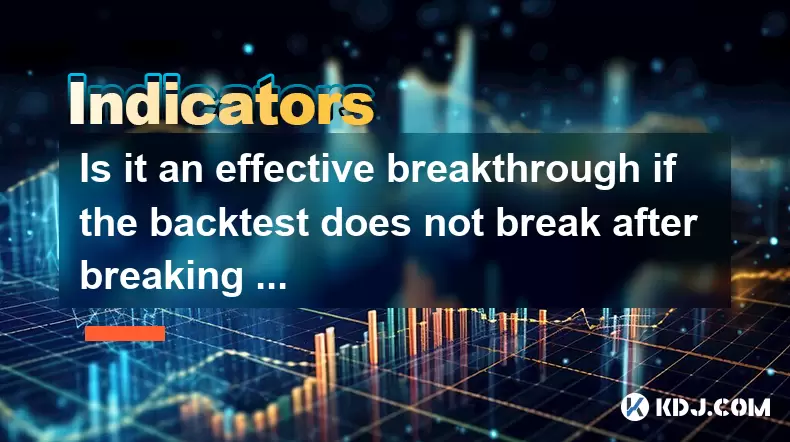
Is it an effective breakthrough if the backtest does not break after breaking through the neckline?
Jun 26,2025 at 10:08pm
Understanding the Role of Blockchain in Secure TransactionsBlockchain technology is at the heart of secure cryptocurrency transactions. Each block contains a list of transactions, and once recorded, altering past blocks becomes nearly impossible without network consensus. This immutability ensures that once a transaction is confirmed, it cannot be rever...
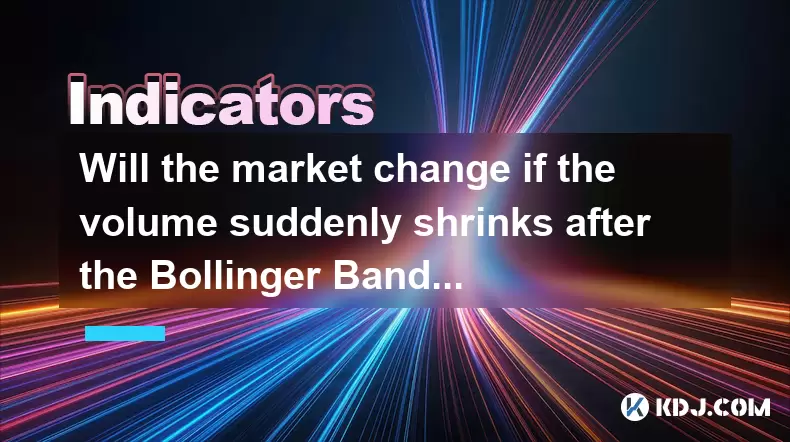
Will the market change if the volume suddenly shrinks after the Bollinger Bands open?
Jun 26,2025 at 09:56pm
Understanding the Bollinger Bands MechanismBollinger Bands are a widely used technical analysis tool that consists of a moving average and two standard deviation lines plotted above and below it. These bands dynamically adjust to price volatility, expanding during periods of high market activity and contracting when volatility decreases. Traders use thi...
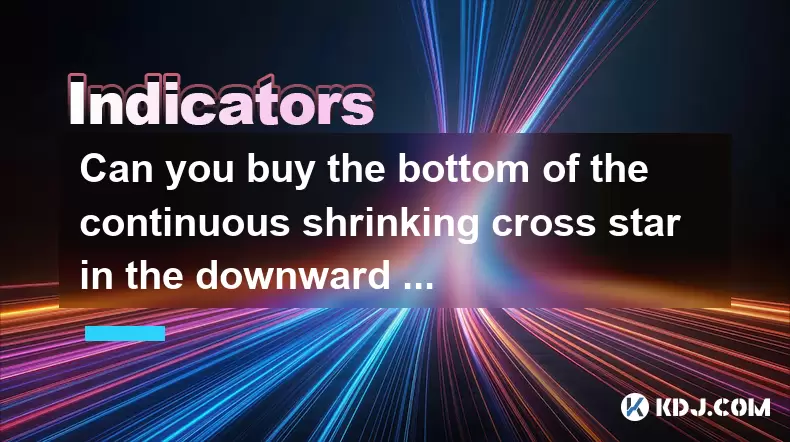
Can you buy the bottom of the continuous shrinking cross star in the downward trend?
Jun 26,2025 at 10:28pm
Understanding the Continuous Shrinking Cross Star PatternThe continuous shrinking cross star is a candlestick pattern that typically appears during a downtrend. It consists of multiple small-bodied candles with upper and lower shadows, indicating market indecision. Each subsequent candle in this pattern has a smaller body than the previous one, showing ...

Is there a main force bottom-fishing with a long lower shadow at a low position?
Jun 26,2025 at 10:56pm
Understanding the Candlestick Pattern: Long Lower Shadow at a Low PositionA long lower shadow candlestick pattern is often seen as a potential reversal signal in technical analysis. When this pattern appears at a low position, it suggests that sellers pushed prices down during the session, but buyers eventually stepped in and pulled the price back up ne...
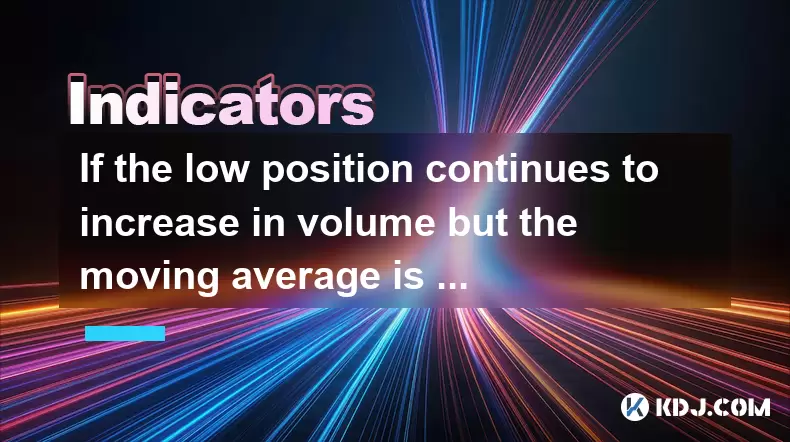
If the low position continues to increase in volume but the moving average is still short, should we wait and see?
Jun 26,2025 at 08:07pm
Understanding the Scenario: Low Position with Increasing VolumeIn the cryptocurrency market, traders often encounter situations where a particular asset is trading at a relatively low price level (referred to as a 'low position'), yet there is a noticeable increase in trading volume. This phenomenon can be confusing because it suggests that more market ...
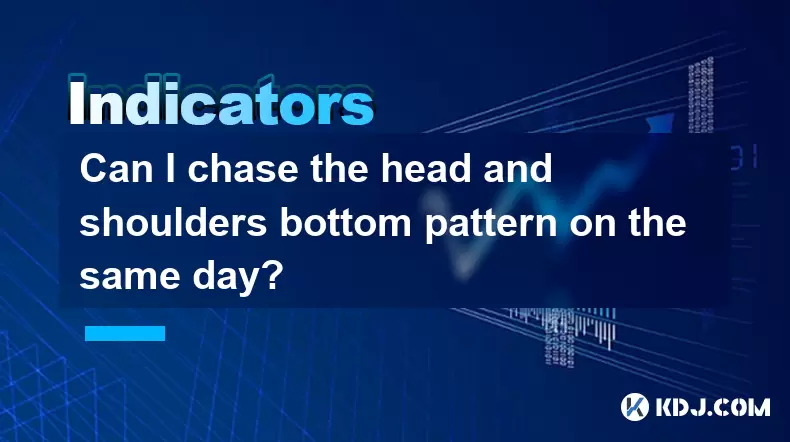
Can I chase the head and shoulders bottom pattern on the same day?
Jun 26,2025 at 06:14pm
Understanding the Head and Shoulders Bottom Pattern in Cryptocurrency TradingThe head and shoulders bottom pattern, also known as the inverse head and shoulders, is a reversal chart pattern commonly observed in cryptocurrency price charts. It signals a potential shift from a downtrend to an uptrend. The structure consists of three distinct lows: the lef...

Is it an effective breakthrough if the backtest does not break after breaking through the neckline?
Jun 26,2025 at 10:08pm
Understanding the Role of Blockchain in Secure TransactionsBlockchain technology is at the heart of secure cryptocurrency transactions. Each block contains a list of transactions, and once recorded, altering past blocks becomes nearly impossible without network consensus. This immutability ensures that once a transaction is confirmed, it cannot be rever...

Will the market change if the volume suddenly shrinks after the Bollinger Bands open?
Jun 26,2025 at 09:56pm
Understanding the Bollinger Bands MechanismBollinger Bands are a widely used technical analysis tool that consists of a moving average and two standard deviation lines plotted above and below it. These bands dynamically adjust to price volatility, expanding during periods of high market activity and contracting when volatility decreases. Traders use thi...

Can you buy the bottom of the continuous shrinking cross star in the downward trend?
Jun 26,2025 at 10:28pm
Understanding the Continuous Shrinking Cross Star PatternThe continuous shrinking cross star is a candlestick pattern that typically appears during a downtrend. It consists of multiple small-bodied candles with upper and lower shadows, indicating market indecision. Each subsequent candle in this pattern has a smaller body than the previous one, showing ...

Is there a main force bottom-fishing with a long lower shadow at a low position?
Jun 26,2025 at 10:56pm
Understanding the Candlestick Pattern: Long Lower Shadow at a Low PositionA long lower shadow candlestick pattern is often seen as a potential reversal signal in technical analysis. When this pattern appears at a low position, it suggests that sellers pushed prices down during the session, but buyers eventually stepped in and pulled the price back up ne...

If the low position continues to increase in volume but the moving average is still short, should we wait and see?
Jun 26,2025 at 08:07pm
Understanding the Scenario: Low Position with Increasing VolumeIn the cryptocurrency market, traders often encounter situations where a particular asset is trading at a relatively low price level (referred to as a 'low position'), yet there is a noticeable increase in trading volume. This phenomenon can be confusing because it suggests that more market ...

Can I chase the head and shoulders bottom pattern on the same day?
Jun 26,2025 at 06:14pm
Understanding the Head and Shoulders Bottom Pattern in Cryptocurrency TradingThe head and shoulders bottom pattern, also known as the inverse head and shoulders, is a reversal chart pattern commonly observed in cryptocurrency price charts. It signals a potential shift from a downtrend to an uptrend. The structure consists of three distinct lows: the lef...
See all articles
























































































